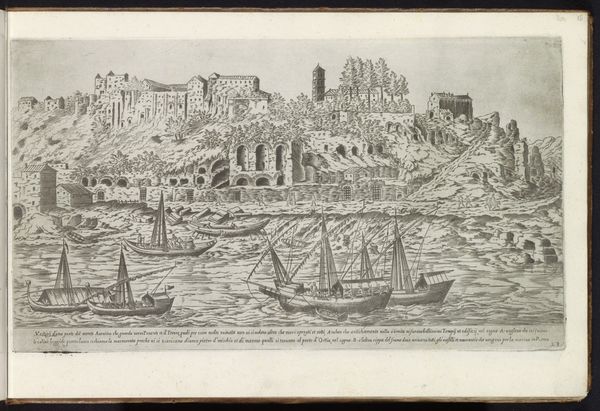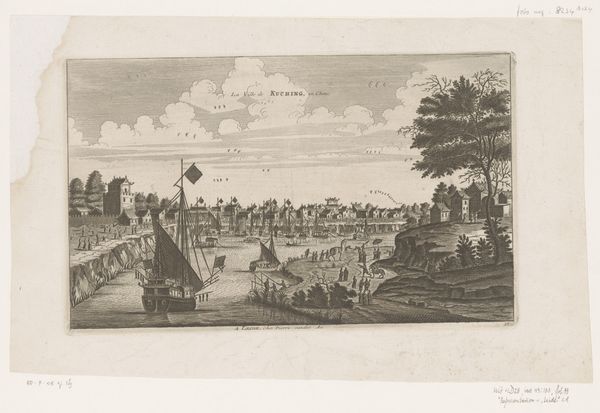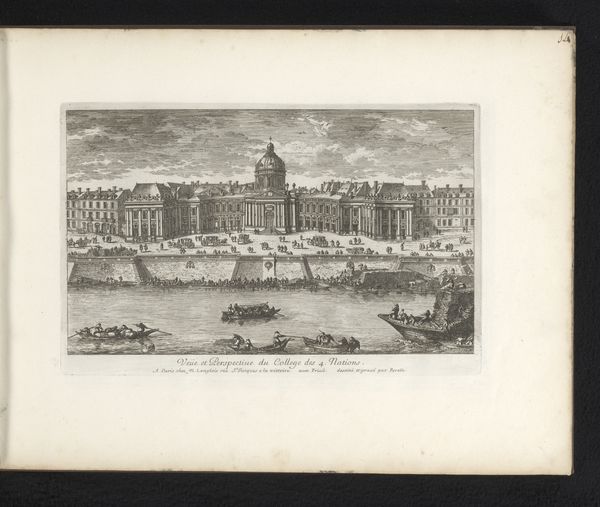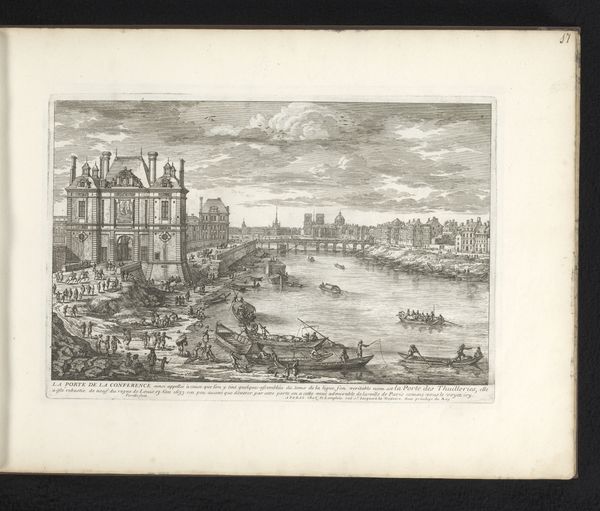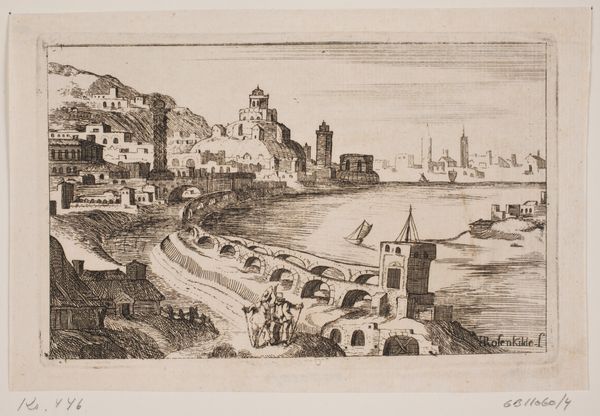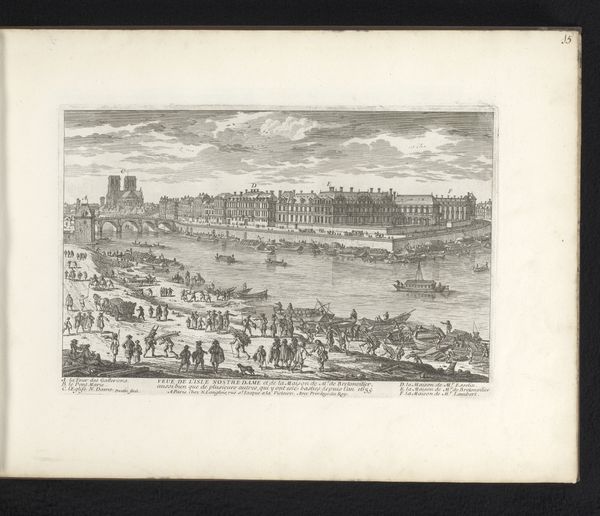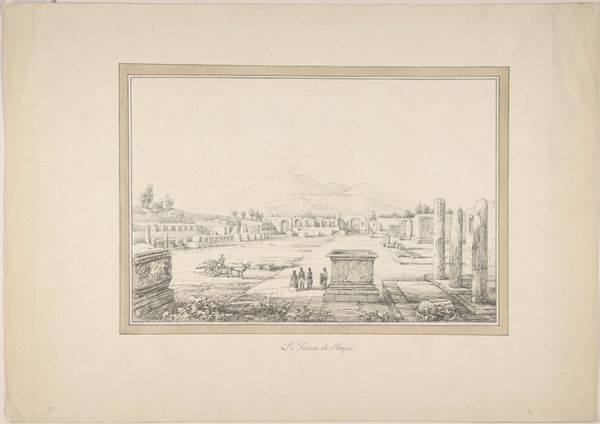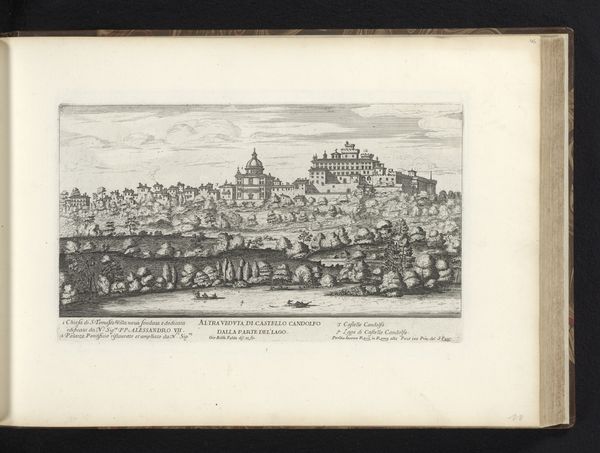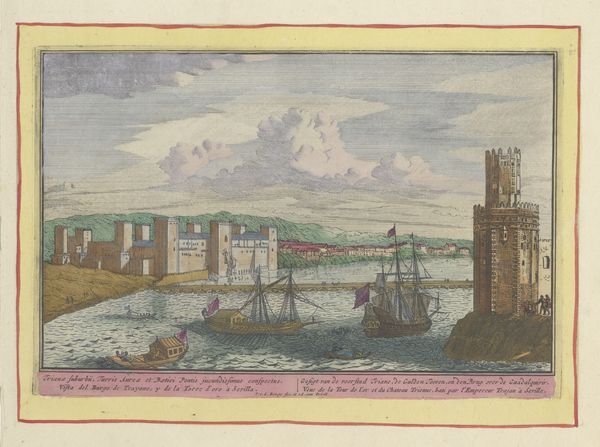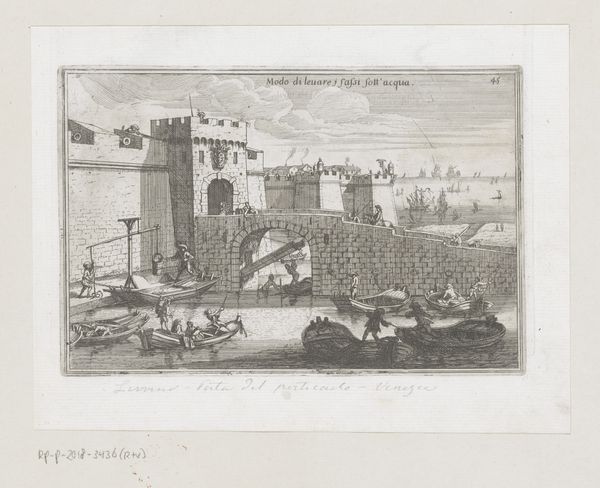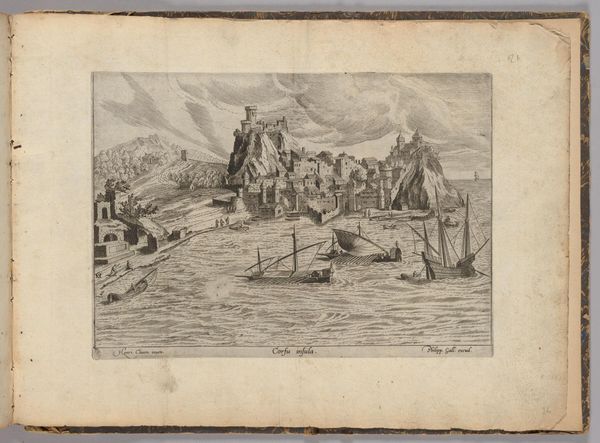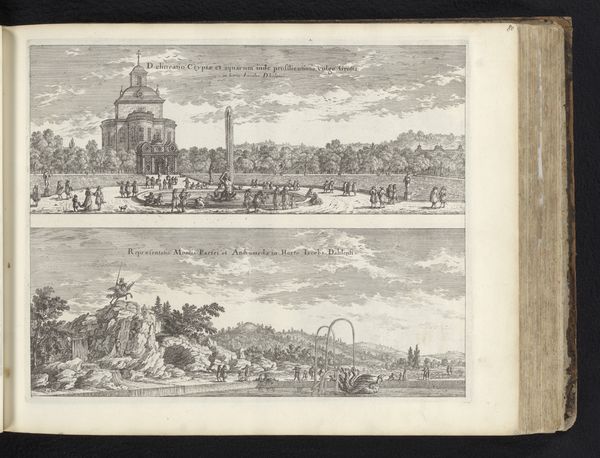
drawing, ink, pen
#
drawing
#
ink drawing
#
pen drawing
#
pen sketch
#
pencil sketch
#
landscape
#
perspective
#
11_renaissance
#
personal sketchbook
#
ink
#
ink drawing experimentation
#
geometric
#
pen-ink sketch
#
pen work
#
sketchbook drawing
#
pen
#
cityscape
#
italian-renaissance
#
sketchbook art
Dimensions: height 215 mm, width 381 mm
Copyright: Rijks Museum: Open Domain
Editor: So, this is Étienne Dupérac's "Tiber Island in Rome," a pen and ink drawing from 1575, currently housed in the Rijksmuseum. There's such incredible detail in the buildings and the water. What do you see in this piece, beyond the surface-level depiction of a cityscape? Curator: I see a document deeply embedded in the politics of urban space and papal power. Dupérac, working in Rome during the Counter-Reformation, wasn't just recording a picturesque view. He was capturing a specific moment in the city's transformation, driven by the Church’s ambitions. How does understanding that context change your view? Editor: It makes me consider what's included and what's left out. The composition feels very deliberate, almost staged. Is this perspective designed to convey a certain message? Curator: Absolutely. The Tiber Island, with its history rooted in both pagan and Christian traditions, was undergoing significant alterations under papal patronage. Dupérac’s perspective likely served to reinforce the image of Rome as a carefully orchestrated urban center, a visual manifestation of centralized authority. Notice the bridges, symbols of connection but also control – who benefits from those connections? Editor: I see your point. It's easy to just admire the aesthetic qualities of the drawing, but there are complex layers of power at play in even seemingly straightforward depictions of a landscape. Curator: Precisely. Think about the act of mapping, of defining space. Whose perspective is privileged, and whose is erased? Dupérac's work becomes a tool for understanding the historical construction of Rome as a seat of power. Editor: This gives me a lot to think about. I’m not just looking at a pretty drawing, I’m seeing a statement. Curator: And hopefully, that statement prompts more questions about the relationship between art, power, and urban development.
Comments
No comments
Be the first to comment and join the conversation on the ultimate creative platform.
